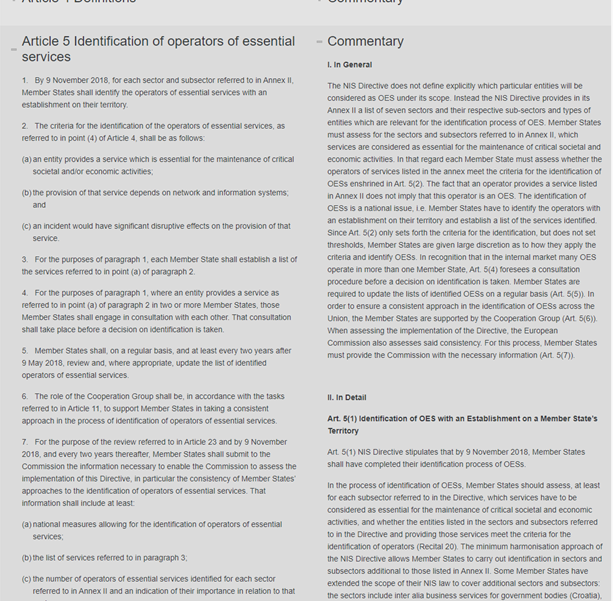One of the main deliverables of the EnCaViBS project is a living commentary to the NIS Directive.
A legal commentary can be a useful resource for providing current information on specific legislation. Legal commentaries usually refer to legal practice, and help to form structures and to define principles in individual areas of law. The main functions of a commentary are thus: structuring the law, and marking out its principles, while also structuring the discourse around the law. With the commentary to the NIS Directive, the EnCaViBs project team intended to render difficult legal material also accessible for non-specialists, and present norms in a systematic, interpretative context. This was to be accompanied by information on the genesis of the Directive. However, in light of the accelerated speed of review of the NIS Directive and the adoption of the NIS 2 Directive in December 2022, the idea of a detailed commentary to the NIS has been slightly modified. In the coming weeks, the EnCaViBS will publish its commentary to the NIS Directive in an updated version supplemented by an overview of the deficits and deficiencies of the NIS Directive in practice and a brief comment on the corresponding articles of the NIS 2 Directive. This modification also takes into account that no case law could be identified in relation to the interpretation of the national transpositions of the NIS Directive or the Directive itself.
Today an update of the commentary to Article 5 NIS Directive has been published, which also addresses the identification procedure under the NIS 2 Directive. The NIS 2 Directive abandons the distinction made between OES and DSPs and, in turn, introduces a differentiation between ‘essential’ and ‘important’ entities that pays regard to the level of criticality of the sector or of the type of service.

